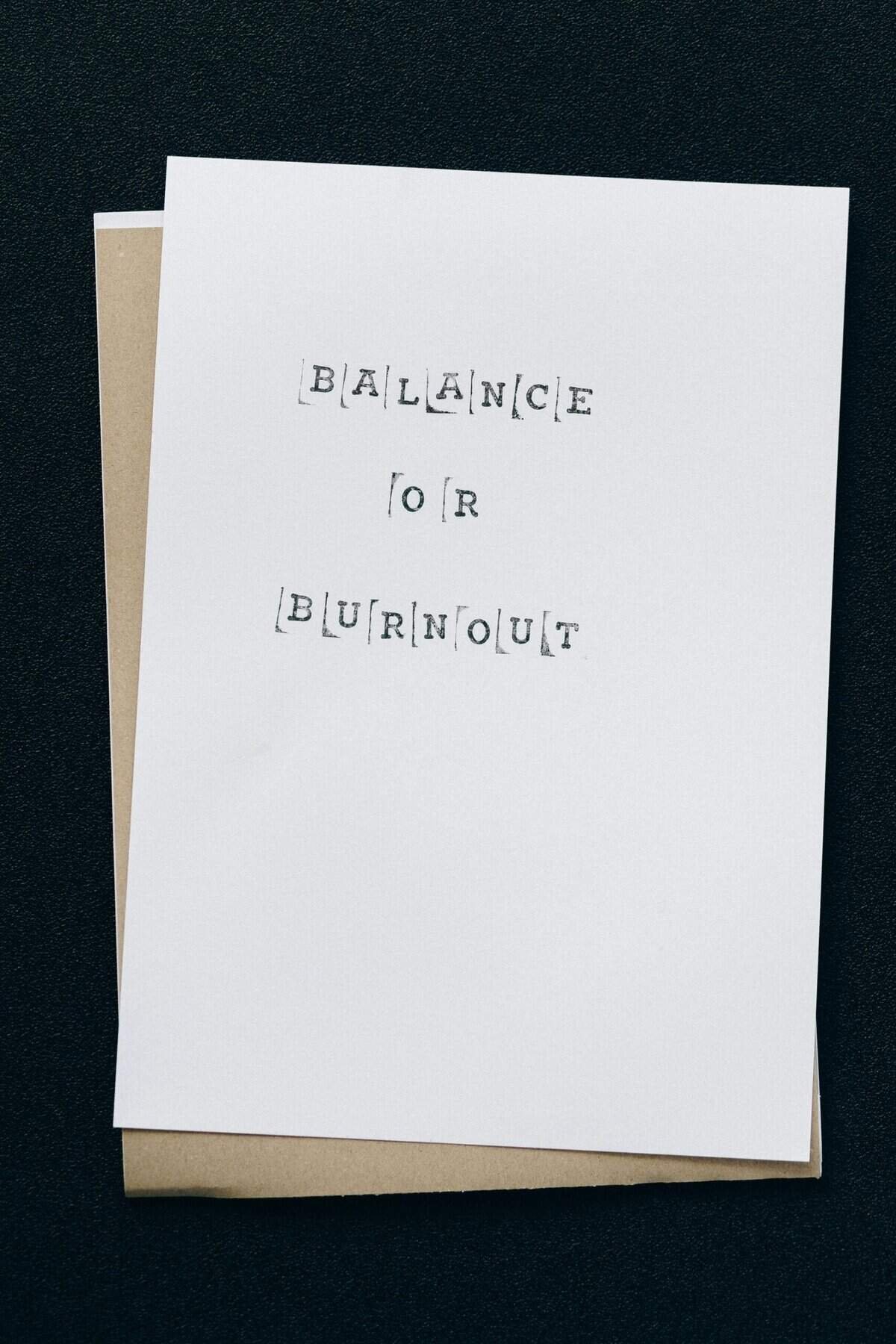?Can freelancing leave you feeling exhausted, overwhelmed, and disconnected from the work that used to energize you?
Freelancing can be an amazing way to shape your work around your life, but it can also create conditions that make career burnout more likely. This article will help you recognize the warning signs, understand the causes that are especially common for freelancers, and give you practical steps to prevent and recover from burnout so you can sustain a rewarding freelance career.
What is burnout and why it matters for freelancers
Burnout is a state of emotional, physical, and mental exhaustion caused by prolonged stress. It often results in reduced performance, cynicism about work, and a feeling of emptiness or detachment.
For freelancers, burnout matters because your livelihood depends directly on your capacity to deliver. If you ignore early warning signs, you risk losing clients, income, and long-term passion for your work. Understanding burnout helps you protect your energy, creativity, and business stability.
How burnout looks different for freelancers
Burnout for freelancers often blends personal and professional stress in unique ways that aren’t always obvious. You might be juggling marketing, client relations, accounting, and delivery, which intensifies the risk.
Unlike traditional employees who might have HR, paid time off, or predictable schedules, you often carry all responsibilities yourself. That means the same stressors that would be distributed across a company can pile up on you quickly, changing how burnout appears and how you should address it.
Emotional symptoms you should notice
Emotional burnout tends to create a sense of detachment and cynicism about your work. You may find yourself dreading projects, feeling unmotivated, or becoming unusually irritable with clients and collaborators.
These changes might be subtle at first, like procrastinating more than usual or feeling less proud of your completed work. If you see persistent emotional shifts, treat them as signals to reassess workload and self-care.
Physical symptoms to watch for
Physical symptoms often include constant fatigue, headaches, sleep disturbances, and weakened immunity. These signs may come from long hours, irregular routines, or neglecting basic health needs.
If your body feels consistently rundown, it’s not just “part of freelancing” — it’s a cue to slow down and address your work patterns and health habits.
Cognitive and performance signs
Burnout affects your ability to concentrate, process information, and be creative. You may miss deadlines, make more mistakes, or find tasks that used to be easy now feel difficult.
When your output declines and it becomes harder to start or finish work, you should consider interventions like reducing workload, delegating, or seeking external support.

Common causes of burnout among freelancers
There are several structural and behavioral causes that make freelancers especially vulnerable to burnout. Recognizing these causes helps you target effective solutions.
Below are the most common causes you’ll encounter as a freelancer.
Irregular income and financial stress
Uncertain cash flow creates constant mental strain that can trigger long-term anxiety and pressure to accept every opportunity. That pressure can push you to overbook, lower rates, or skip breaks.
By stabilizing your finances and building buffers, you reduce the need for reactive decisions that contribute directly to burnout.
Overworking and lack of boundaries
Working across multiple projects and time zones often leads to very long workdays and blurred personal boundaries. You might be answering client messages late at night or working weekends just to stay ahead.
Establishing clear work hours and communicating them to clients helps you protect your time and energy.
Juggling multiple roles
You’re often the marketer, salesperson, accountant, project manager, and creator all at once. Handling so many roles increases cognitive load and leaves little space for deep, focused work.
Delegating or automating certain roles reduces the mental load and lets you focus on the tasks that matter most to your revenue and satisfaction.
Client management stress
Difficult clients, scope creep, and unclear expectations are frequent sources of stress. Without strong contracts and negotiation skills, you can end up doing extra work for the same pay.
Setting clear contracts, boundaries, and communication protocols helps you manage relationships and protect your time.
Isolation and lack of social support
Working alone means you miss out on casual social contact and peer support that traditional workplaces provide. That isolation can reduce your resilience and increase feelings of burnout.
Building community through coworking, online groups, or networking gives you emotional resources and practical advice that improve your well-being.
Continuous hustle culture pressure
Freelancing often encourages a “always-on” mindset, where hustle is normalized and rest is stigmatized. That culture pushes you toward unsustainable levels of output.
Reframing productivity to include rest and recovery helps you maintain creativity and long-term income.
Who is most at risk among freelancers?
Certain personal and business situations make burnout more likely. If you match any of these conditions, you should be proactive about protective measures.
- New freelancers who are still building client pipelines and income stability.
- High-earning but overworked freelancers who accept too many projects.
- Solo operators who handle every aspect of their business alone.
- Creatives facing frequent rejection or long periods between meaningful projects.
- Freelancers with caregiving responsibilities or other external stressors.
Knowing your risk profile helps you tailor solutions that fit your lifestyle and work type.

Recognizing the early warning signs
Catching burnout early makes recovery much easier. Use the table below to help you identify early indicators and their practical impacts on your work and life.
| Early Warning Sign | What it looks like for you | Immediate action to consider |
|---|---|---|
| Persistent fatigue | You’re tired even after rest; low energy during work | Prioritize sleep, shorten workdays for a few days |
| Decreased motivation | You procrastinate or avoid projects you used to enjoy | Reassess project fit and take a small break |
| Dropping quality | More mistakes, poor output quality | Slow down, ask for feedback, reduce workload |
| Short temper or irritability | You snap at clients or feel unreasonably frustrated | Communicate boundaries, schedule downtime |
| Avoiding clients | You delay replies or avoid meetings | Set small, scheduled touchpoints and keep them |
| Social withdrawal | Social interactions feel draining or pointless | Reconnect with a supportive friend or peer |
If you check several boxes consistently over weeks, treat this as a sign to make meaningful changes rather than just a short rest.
Short-term fixes you can use immediately
When you spot early burnout, quick interventions can reduce immediate stress and buy you time to create long-term habits. These are small and practical actions you can implement today.
- Set a strict “no-work” window each day for rest and personal activities.
- Pause new client acquisition for a short period to reduce pressure.
- Delegate or outsource the most time-consuming non-revenue tasks.
- Create a lightweight daily schedule with built-in breaks and a hard stop time.
- Re-negotiate current deadlines when quality is at risk.
Short-term changes aren’t a cure, but they prevent further decline and help you think clearly about sustainable changes.

Long-term strategies to prevent burnout
Sustainable freelancing requires structural changes to your work and life. Long-term strategies focus on building resilience, financial buffer, systems, and support.
The following subsections explain high-impact strategies you can put into practice.
Build financial stability and buffers
A consistent income reduces the anxiety that drives excessive work. Aim to build a minimum three-month emergency fund and consider a recurring retainer model with some clients.
Also diversify your income streams with passive or semi-passive products (courses, templates, licensing) so a single contract doesn’t determine your stress level.
Set clear work hours and boundaries
Decide on your working hours and stick to them. Communicate these hours clearly on your website, email signature, and during client onboarding.
Boundaries include response time expectations, off-hour policies, and a clear process for handling urgent requests. Enforcing boundaries protects your personal time and recharges your mental energy.
Raise your rates and price for value
Underpricing forces you to work more to make the same income, increasing burnout risk. Price based on the value you provide, not just the time you spend.
Experiment with project-based pricing or retainer models that reward outcomes and reduce constant hourly labor.
Create scalable systems and templates
Systematize repeated tasks such as proposals, invoices, onboarding, and reporting. Templates save time and reduce decision fatigue.
Automation tools (invoicing, scheduling, email sequences) also cut down on manual tasks and free you up for higher-value work.
Outsource and collaborate
You don’t need to do everything yourself. Outsource bookkeeping, admin, or specialized tasks to freelancers or virtual assistants.
Collaboration with peers on projects also spreads workload and creates peer support, which lowers burnout risk.
Prioritize clients and projects
Not all clients are worth the stress. Use criteria for client fit (budget, communication style, timeline, scope) and decline or refer bad-fit clients.
Working with aligned clients results in smoother projects, less friction, and greater job satisfaction.
Build a support network
Create a network of peers, mentors, and friends who understand your work and can offer perspective. Regular check-ins with peers can provide social support and professional feedback.
Communities can also be a source of referrals and shared resources, easing your workload indirectly.
Tools and routines that help prevent burnout
Having the right tools and daily routines reduces friction and protects mental energy. You don’t need everything — pick tools that match your workflow.
- Time-tracking apps to prevent overwork and show you where time goes.
- Scheduling tools (Calendly, Acuity) to control client booking windows.
- Project management apps (Trello, Asana, Notion) to keep work organized.
- Email automation and canned responses to handle common queries.
- Regular exercise, consistent sleep schedule, and a simple morning routine to prime your energy.
Combining behavior changes with the right tools makes long-term habits easier to maintain.

How to handle clients who trigger burnout
Some clients are more likely to cause stress than others. You can proactively protect yourself while maintaining professionalism.
- Use a clear contract that outlines scope, deliverables, timelines, and payment terms.
- Add a clause for scope changes (extra rate or change request process) to prevent scope creep.
- Communicate realistic deadlines and buffer time for revisions.
- Use a brief discovery process to screen clients before taking work.
- Know when to fire a client and have an offboarding template ready.
These steps reduce surprises and hold both parties accountable, minimizing stress.
The role of contracts, policies, and onboarding
Strong contracts and onboarding systems are your frontline defense against stress. They set expectations and reduce the back-and-forth that eats your time.
Include payment schedules, revisions, response times, and termination terms. A good onboarding process gives clients clarity on how and when you’ll work, which reduces friction and misaligned expectations.

Mental health and when to seek professional help
Burnout blends into depression and anxiety for some people, and you should treat your mental health seriously. If you experience persistent hopelessness, suicidal thoughts, or inability to function, seek professional support immediately.
A therapist or counselor can help you build coping strategies and recovery plans. Consider also working with a coach who understands freelancing to rebuild sustainable business habits.
Recovering from burnout: a step-by-step plan
Recovery requires both rest and structural changes. Follow a phased plan that balances immediate recovery with long-term prevention.
| Phase | Focus | Practical actions |
|---|---|---|
| Immediate rest | Stabilize energy and reduce workload | Pause new work, delegate urgent tasks, schedule restful activities |
| Re-evaluation | Assess causes and priorities | Complete a self-assessment, list stressors, identify quick wins |
| Rebuild systems | Create supportive structures | Implement contracts, set hours, automate tasks, raise rates |
| Re-engage | Return to work gradually | Take on small projects first, apply new boundaries, keep accountability |
| Maintain | Prevent relapse | Regular check-ins with peers, review finances quarterly, adjust workload |
Treat recovery as a business pivot: you’re changing how you work to sustain a longer and healthier career.
Practical daily and weekly routines to build resilience
Small daily habits compound into major improvements in your energy and focus. Create routines that support sustainable output.
Daily:
- Start with a 10–20 minute morning routine (light movement, planning, or journaling).
- Block focused work time with scheduled breaks (use the Pomodoro technique if it helps).
- End your day with a shutdown ritual (review tasks, update calendar, close work apps).
Weekly:
- Review finances and pipeline at a set time each week.
- Schedule at least one full day off or a restorative mini-day.
- Plan one social or community activity to reduce isolation.
Consistency matters more than intensity, so pick routines you can keep.
Pricing strategies that reduce overwork
How you charge clients has a direct impact on how much you must work. Smart pricing strategies make your income less tied to hours worked.
- Use value-based pricing where possible to capture more upside.
- Offer retainer agreements for predictable monthly income.
- Charge premium rates for rush work or off-hours requests.
- Create tiered service packages so clients self-select the level of service they need.
These approaches reduce the pressure to take on more hours just to make ends meet.
When to scale and when to exit
Scaling up your freelance business can relieve bottlenecks but introduces management overhead that could trigger new stress. Decide strategically whether to hire, form a small agency, or transition to product-led income.
If your work consistently drains you and scaling doesn’t align with your lifestyle, consider transitioning to a different model or role that fits your desired quality of life. The goal is a sustainable career, not just bigger revenue.
Small case examples to illustrate practical choices
Example 1: You’re booking too many short projects. By switching to a retainer for a key client and automating invoicing, you cut admin time by 40% and reduced week-to-week income anxiety.
Example 2: You accept late-night requests to secure clients. After setting clear “response hours” and charging a premium for urgent work, you stopped losing evenings and regained creative energy.
These examples show that small policy changes and better systems can produce major improvements.
Quick checklist to prevent burnout
Use this checklist to audit your current situation and identify immediate steps.
- Do you have emergency savings (3+ months)? If not, start building one.
- Do you work consistent hours and enforce them? If not, set and communicate hours.
- Do you have a written contract for each client? If not, create a basic template.
- Do you have at least one reliable peer or mentor? If not, join a group or reach out.
- Have you automated or outsourced non-core tasks? If not, list tasks to delegate.
- Do you schedule rest and social activities? If not, put them in your calendar now.
Checking these boxes reduces the most common drivers of burnout.
Frequently asked questions
Q: Can freelancers avoid burnout entirely? A: Avoiding burnout entirely is unrealistic, but you can greatly reduce the risk and severity by building systems, boundaries, and support. Occasional periods of stress are normal; chronic stress is what you want to prevent.
Q: Is burnout a sign that freelancing is the wrong path for me? A: Not necessarily. Burnout is often a sign that your systems, boundaries, or workload need adjustment rather than an indictment of freelancing itself. Assess whether changes can improve your situation before making a major career shift.
Q: How long does recovery from burnout take? A: Recovery varies widely depending on severity; it can range from a few weeks of rest and restructuring to several months of therapy and lifestyle change. Be patient and focus on sustainable habits rather than quick fixes.
Tools and resources to support you
Here are categories of resources and examples you can use to prevent and recover from burnout:
- Financial: budgeting apps, invoice management, and savings automation.
- Productivity: time trackers, calendar blockers, project managers.
- Mental health: online therapy platforms, local counselors, peer support groups.
- Business systems: contract templates, onboarding checklists, proposal software.
Choose a small set of tools that reduce friction rather than adding complexity.
Closing thoughts
Freelancing can give you freedom and control, but that freedom often comes with unique pressures that increase the chance of burnout. The good news is that with intentional systems, clear boundaries, financial planning, and social support, you can build a freelance career that is both sustainable and satisfying.
If you find yourself slipping toward burnout, take small immediate steps to rest and reassess, then implement structural changes to prevent recurrence. Your well-being is as important to your business as your skills and reputation — protecting it is not optional, it’s essential for the long run.
